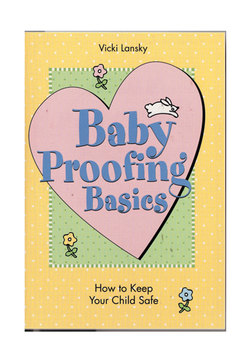Читать книгу Baby Proofing Basics - Vicki Lansky - Страница 14
На сайте Литреса книга снята с продажи.
THE BATHROOM “FURNISHINGS”
ОглавлениеKeep the toilet lid down, or better yet, get a guard that actually locks it. It’s important to prevent it from becoming a place for water play and a dangerous opportunity for drowning. (Yes, children have drowned in toilets.) Children are often fascinated by the action of the swirling water and can fall in head first.
Get a soft spout cover for the bathtub. It will save your baby from bumps and bruises. It will also help to avoid the possibility of burns from a very hot water spout. As an extra safety measure, face your child away from the tub spout.
Test the bath water on the inside of your wrist before putting your baby into the tub. Better yet, invest in a bath thermometer. When you’ve filled the tub, turn off the hot water before the cold, so the latter will flow through the faucet if your child manages to touch it.
Collect all bathing materials before bringing the baby into the bathroom.
Keep the water temperature for your house set at about 120 degrees — hot enough to clean clothes and dishes, yet not scalding. If you have no control over the water heater, check your hardware store for anti-scald aerators. Or retrofit a valve with a special temperature-sensitive spring called an actuator to stop the flow of scalding water.
Put non-skid appliques on the bottom of the tub to prevent slips, or use a full-length rubber bath mat.
Don’t leave soap and shampoo on the edge of the tub for a child to grab.
The Bathroom
Use a tub guard to pad the tub’s side and give you a comfortable place to lean when bathing a child.
Never leave water in the tub when it’s not in use. A toddler can fall in and drown in as little as two inches of water.
Do not, under any circumstances, leave a child under five years old unattended in the tub. If you can’t stand to let a phone ring, unplug it or use an answering machine. If you must leave the room for any reason, wrap your child in a towel and take him or her with you.
